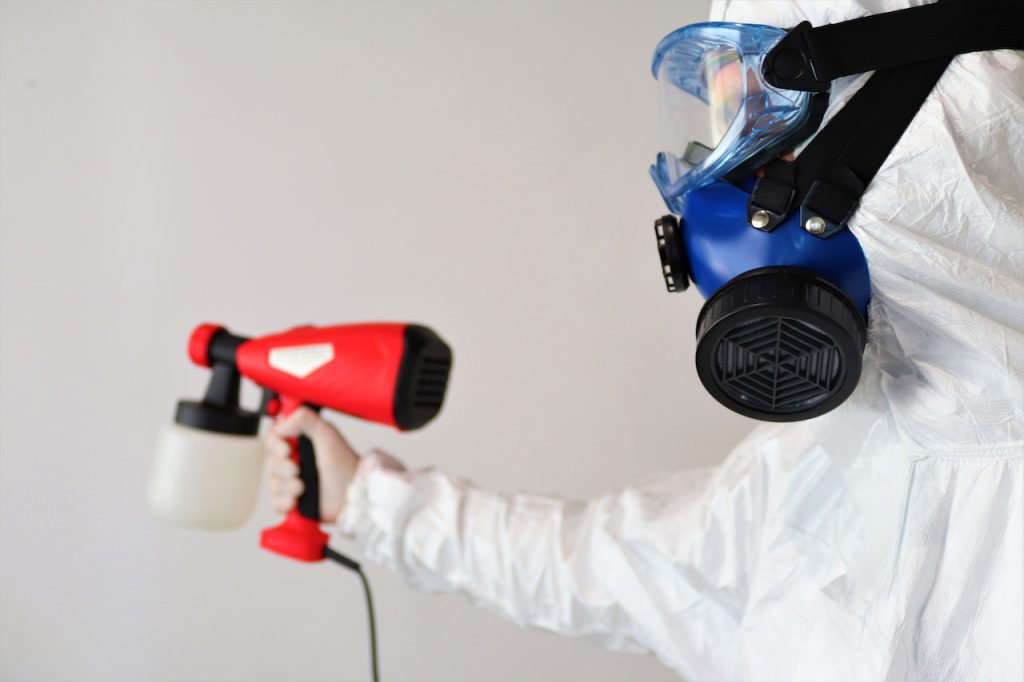In the pursuit of a safe and healthy home environment, we often focus on the visible threats that can compromise our well-being. We diligently clean, maintain, and secure our homes against common hazards such as fires, burglaries, and natural disasters. However, there is an insidious intruder that can quietly infiltrate our homes, causing harm to our health without us even realizing it – mold. Mold, in its various forms, can thrive in hidden corners and crawlspaces, steadily releasing toxic spores into the air we breathe. The consequences of mold exposure can be severe, ranging from allergies and respiratory issues to more serious health concerns. In this article, we will explore the crucial role of professional mold inspections in safeguarding your family’s health by detecting and mitigating this often underestimated threat lurking in your home. We will delve into the dangers of mold, the benefits of expert inspections, and the proactive steps you can take to ensure the well-being of your loved ones. It’s time to shed light on the hidden dangers and empower you to take control of your family’s health through professional mold inspections.
Table of Contents
ToggleUnderstanding The Health Risks Of Toxic Mold
Toxic molds are a serious concern that can have detrimental effects on your health and well-being. These molds release harmful mycotoxins, which can lead to severe health issues if left unchecked.
Exposure to toxic molds can result in a range of respiratory problems. The inhalation of mold spores can trigger allergies and asthma attacks, causing wheezing, coughing, and difficulty breathing. Prolonged exposure may even lead to more severe respiratory conditions such as bronchitis or pneumonia.
In addition to respiratory issues, toxic mold exposure has been linked to various other health problems. Some individuals may experience allergic reactions when exposed to mold, including skin rashes, itching, and watery eyes. Others may suffer from neurological symptoms like headaches, dizziness, or difficulty concentrating.
It is important to note that certain individuals are more susceptible to the adverse effects of toxic mold than others. Infants, elderly people, and those with weakened immune systems are particularly vulnerable. Their bodies may struggle to fend off the mycotoxins released by mold spores, making them more prone to developing severe health complications.
Understanding the potential health risks associated with toxic molds is crucial for safeguarding your family’s well-being. By recognizing the dangers posed by these molds, you can take proactive measures to protect yourself and your loved ones from harm.
Here are some steps you can take:
- Identify potential sources of mold growth in your home: Check areas prone to moisture accumulation such as bathrooms, kitchens, basements, and crawl spaces.
- Improve ventilation: Ensure proper airflow throughout your home by using fans or opening windows regularly.
- Control humidity levels: Use dehumidifiers in damp areas and fix any leaks promptly.
- Remove visible mold promptly: If you spot any signs of mold growth in your home, it’s essential to address it immediately.
- Consider professional mold inspections: Engaging the services of a certified mold inspector can provide an accurate assessment of your home’s air quality and identify any hidden mold issues.
By being proactive in managing mold exposure, you can significantly reduce the risks to your family’s health. Regularly monitoring your living environment for signs of mold growth and promptly addressing any issues that arise is essential for maintaining good indoor air quality.
Common Misconceptions About Mold Testing
1. DIY Home Test Kits May Not Provide Accurate Results
One common misconception about mold testing is that do-it-yourself (DIY) home test kits can accurately determine the presence and extent of mold infestation. However, these kits often have limited scope and reliability. They typically involve collecting a sample from the suspected area and sending it to a lab for analysis. While this may seem like a convenient option, it is important to note that the results obtained from DIY kits may not always be accurate.
Professional mold inspectors, on the other hand, utilize advanced testing methods and equipment to ensure accurate results. They have specialized knowledge and experience in identifying different types of molds and understanding their potential health risks. By hiring a professional mold inspector, you can have peace of mind knowing that your home will undergo thorough testing using reliable techniques.
2. Visual Inspection Alone Is Insufficient
Another misconception is that visual inspection alone is enough to determine the presence or extent of a mold infestation. While visible signs of mold growth are certainly an indication of a problem, they do not provide a complete picture. Mold can thrive in hidden areas such as behind walls or under flooring, making it difficult to detect with the naked eye.
Professional mold inspectors conduct comprehensive inspections using moisture meters, thermal imaging cameras, and other specialized tools to identify hidden sources of moisture and potential areas of mold growth. This thorough approach ensures that all affected areas are properly assessed, minimizing the risk of overlooking any potential issues.
3. Relying On Smell Alone Is Not Reliable
Many people believe that relying solely on smell is an effective method for identifying all types of molds present in their homes. While certain molds may emit distinct odors, others may not have any noticeable smell at all. Some individuals may be less sensitive to these odors or become accustomed to them over time.
Professional mold inspectors understand that relying on smell alone is not a reliable indicator of mold presence. They use air sampling techniques to collect samples from different areas of your home and send them to a lab for analysis. This comprehensive approach allows for the identification of various types of molds, even those that may not produce noticeable odors.
4. Hiring A Professional Mold Inspector Ensures Accurate Testing Methods
To ensure accurate results and reliable assessments, it is essential to hire a professional mold inspector. These experts have the knowledge, experience, and tools necessary to conduct thorough mold testing. They follow industry standards and guidelines to ensure accurate sample collection and analysis.
Professional mold inspectors can provide you with detailed reports that outline the types of molds present in your home, their concentrations, and recommendations for remediation if necessary. By relying on their expertise, you can make informed decisions about protecting your family’s health and addressing any potential mold issues effectively.
Exploring Different Types Of Mold Testing Methods
Mold testing is an essential step in ensuring the safety and well-being of your family. By identifying and addressing mold issues promptly, you can prevent potential health hazards. There are various types of mold testing methods available, each serving a specific purpose in detecting and analyzing mold particles. Let’s delve into the different methods commonly used for mold testing.
Air Sampling
Air sampling is a widely used method for assessing indoor air quality and detecting airborne mold spores. This technique involves collecting air samples from different areas of your home using specialized equipment. These samples are then analyzed to determine the concentration and types of molds present in the environment.
Surface Sampling Surface sampling helps identify specific types of molds that may be present on various surfaces within your home. This method involves using tape lifts or swabbing techniques to collect samples from suspected areas such as walls, ceilings, or furniture. The collected samples are then sent to a laboratory for detailed analysis.
Bulk Sampling In certain cases, it may be necessary to collect physical samples of materials affected by mold growth for further examination. Bulk sampling typically involves taking pieces of drywall, flooring, or other building materials that show visible signs of mold contamination. These samples are carefully handled and sent to a laboratory where they undergo comprehensive analysis to determine the type and concentration of molds present.
Infrared Thermography Infrared thermography utilizes advanced thermal imaging technology to detect hidden moisture sources that could contribute to mold growth. By identifying areas with abnormal temperature patterns, this method helps locate potential water leaks or excess moisture that may promote mold infestation. Infrared thermography is particularly useful when investigating hard-to-reach or concealed spaces within your home.
Each type of mold testing method serves a distinct purpose in evaluating the presence and severity of mold problems in your living environment. Depending on the situation at hand, one or more methods may be employed to ensure accurate results.
It is important to note that mold testing should only be conducted by trained professionals who possess the necessary expertise and equipment. Professional mold inspectors are well-versed in these testing methods and can provide reliable assessments of your home’s mold situation.
By utilizing these various mold testing methods, you can gain valuable insights into the types of mold present in your home and their potential impact on your family’s health. Early detection allows for prompt remediation measures to be taken, safeguarding the well-being of your loved ones.
Recognizing Signs Of Mold Infestation: When To Seek Professional Help
If you want to protect your family’s health, it is crucial to recognize the signs of mold infestation and know when to seek professional help. Mold can be a serious problem that not only damages your home but also poses significant health risks. By understanding the warning signs, you can take timely action and prevent further harm.
Visible signs like black spots, discoloration, or fuzzy growth on walls, ceilings, or other surfaces may indicate a mold problem. Mold can thrive in damp areas with poor ventilation. If you notice any unusual black spots or discoloration on your walls or ceilings, it is essential to investigate further. These visual cues are often an indication of underlying mold growth. If you come across any fuzzy textures on surfaces, it could be a clear sign that mold has taken hold.
Musty odors that persist despite thorough cleaning and ventilation could be a sign of hidden mold growth. Sometimes, even if there are no visible signs of mold, persistent musty odors can give away its presence. If you’ve noticed an unpleasant smell in certain areas of your home that lingers despite regular cleaning and proper ventilation, it is wise to consider the possibility of hidden mold growth. Professional mold inspections can help identify these hidden sources and prevent potential health hazards.
Allergy-like symptoms such as sneezing, coughing, and itchy eyes that worsen when indoors might suggest mold exposure. One of the most common indicators of mold infestation is experiencing allergy-like symptoms that worsen when you are inside your home. Sneezing fits, persistent coughing spells, watery eyes, or itching sensations could all point toward exposure to molds present in the indoor environment. If these symptoms seem to improve when you leave your house but return upon returning home again, it’s time to call for professional assistance.
Water leaks or excessive moisture in your home can create an environment conducive to mold growth and should be addressed promptly. Mold thrives in moist environments, making water leaks a significant cause for concern. If you’ve had recent water damage or noticed any signs of excessive moisture in your home, it is crucial to address these issues promptly. Delaying repairs or neglecting proper maintenance can lead to mold infestation and potential health risks for your family.
Recognizing the signs of mold infestation is essential for protecting your family’s health and well-being. Prompt action is necessary when you suspect mold growth in your home. Seeking professional help from a reputable mold remediation company can provide expert guidance and ensure thorough inspection and remediation processes are followed.
Remember, if you notice visible signs like black spots or discoloration, musty odors that persist, experience allergy-like symptoms indoors, or have water leaks causing excessive moisture, it’s time to call the professionals. By addressing these concerns promptly, you can save your family’s health from the dangers associated with mold infestation.
The Process Of Mold Inspection: Key Considerations And Benefits
A comprehensive mold inspection involves assessing both the interior and exterior of your property for potential sources of moisture and mold growth. Mold can thrive in damp environments, making it essential to identify areas where excess moisture may be present. By conducting regular inspections, you can ensure that any mold issues are detected early on, preventing them from causing further damage to your property and potentially harming your family’s health.
Professional inspectors are equipped with specialized tools and equipment that enable them to conduct a thorough mold inspection. Moisture meters are used to measure the level of moisture in different areas of your home, helping identify areas prone to mold growth. Borescopes, on the other hand, allow inspectors to detect hidden mold behind walls or under flooring without causing any damage.
During the inspection process, thorough documentation is crucial. Inspectors carefully document their findings, noting any visible signs of mold growth or water damage. This documentation serves multiple purposes – it helps identify areas of concern that require immediate attention and provides a basis for remediation efforts. By having a detailed record of the inspection findings, homeowners can better understand the extent of the problem and make informed decisions regarding necessary repairs or remediation strategies.
One key benefit of a professional mold inspection is identifying the root cause of the issue. While visible signs of mold growth may be apparent, determining what caused it is equally important. Inspectors will investigate potential sources of moisture such as leaks in plumbing systems, roof damage, or poor ventilation. By addressing these underlying issues during remediation efforts, homeowners can effectively prevent future recurrence of mold problems.
Regular inspections play a vital role in maintaining a healthy living environment for your family. Mold exposure can lead to various health issues including respiratory problems, allergies, and even infections in some cases. By proactively scheduling professional mold inspections at regular intervals, you can ensure that any potential risks are identified early on and appropriate measures are taken to mitigate them.
Preventing Future Mold Growth In Your Home
Proper ventilation in bathrooms, kitchens, and other high-moisture areas helps reduce condensation and prevents mold growth. When moisture accumulates in enclosed spaces, it creates an ideal environment for mold spores to thrive. By ensuring adequate airflow and ventilation, you can minimize the chances of potential mold issues arising.
Regularly inspecting plumbing fixtures for leaks or drips minimizes the risk of water damage leading to mold infestation. Leaky pipes or faucets can introduce moisture into your home’s structure, providing a breeding ground for molds. Taking proactive measures such as fixing any plumbing problems promptly can go a long way in preventing future mold growth.
Controlling indoor humidity levels below 50% discourages mold growth; using dehumidifiers can assist in achieving this goal. High humidity creates a damp environment that fosters mold development. By utilizing dehumidifiers or air conditioners, you can effectively regulate the moisture levels indoors and inhibit the growth of molds.
Promptly addressing any water intrusion issues (e.g., roof leaks or pipe bursts) prevents prolonged moisture exposure that promotes mold development. Water damage is one of the primary causes of hidden mold problems within homes. To avoid costly mold remediation down the line, it is crucial to address any signs of water damage immediately.
In addition to these preventive measures, there are other steps you can take to safeguard your home from potential mold issues:
- Regularly clean and maintain gutters and downspouts to ensure proper drainage.
- Use exhaust fans while cooking or showering to remove excess moisture from the air.
- Insulate windows and walls properly to prevent condensation buildup.
- Avoid carpeting in high-moisture areas like bathrooms or basements.
- Routinely check for signs of dampness or musty odors in your home’s basement or crawl spaces.
By implementing these proactive measures, you can significantly reduce the risk of mold growth in your home. Remember that molds not only damage your property but can also pose serious health risks to you and your family. Exposure to mold spores can lead to respiratory issues, allergies, and other health complications.
In case you encounter a mold problem despite taking preventive measures, it is crucial to address it promptly. Mold remediation professionals have the expertise and tools to safely remove molds and restore a healthy living environment. Avoid using bleach or other household cleaners as they may not effectively eliminate hidden mold or address the underlying moisture problem.
Conclusion
In conclusion, professional mold inspections are an essential step in safeguarding your family’s health. Understanding the health risks associated with toxic mold is crucial, as it can lead to respiratory issues, allergies, and other serious health problems. Common misconceptions about mold testing often deter homeowners from seeking professional help, but with different types of mold testing methods available, it is important to choose the most effective approach for accurate results. Recognizing signs of mold infestation and knowing when to seek professional assistance is key to addressing the problem promptly.
The process of mold inspection involves thorough assessment and identification of the type and extent of mold growth in your home. This critical step allows professionals to provide targeted solutions tailored to your specific needs. By preventing future mold growth through proper remediation techniques and adopting preventive measures like controlling moisture levels, you can ensure a healthy living environment for your family.
Sources:
Unlock A Healthier Home With Professional Mold Inspection And More!
Looking for more than just a service? Garcia Plumbing and Home Restoration offers an experience! Our top-tier team, both licensed and insured, is dedicated to not only meeting but exceeding your expectations. Dive into our comprehensive range of services – from essential plumbing solutions to the intricate art of professional mold inspection, remediation, and storm and water damage restoration.
Our heart beats for Contra Costa County homeowners and beyond. Powered by a legacy of glowing reviews and countless referrals, Garcia Plumbing and Home Restoration stands as a beacon of quality and unmatched expertise. When it comes to your home’s health and safety, why settle for anything less than the best?
Discover the Garcia difference. Reach out now and redefine what exceptional service feels like!




